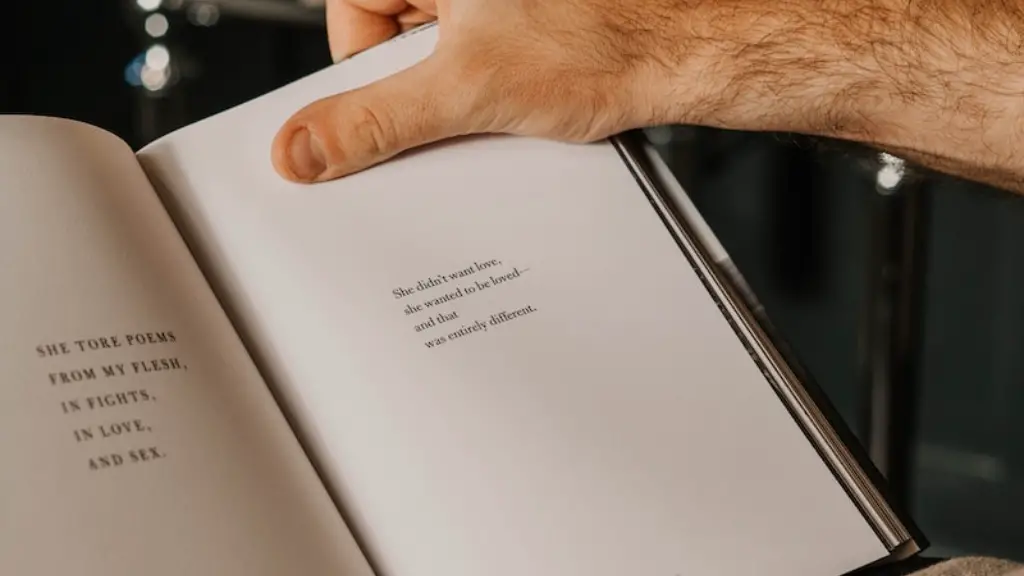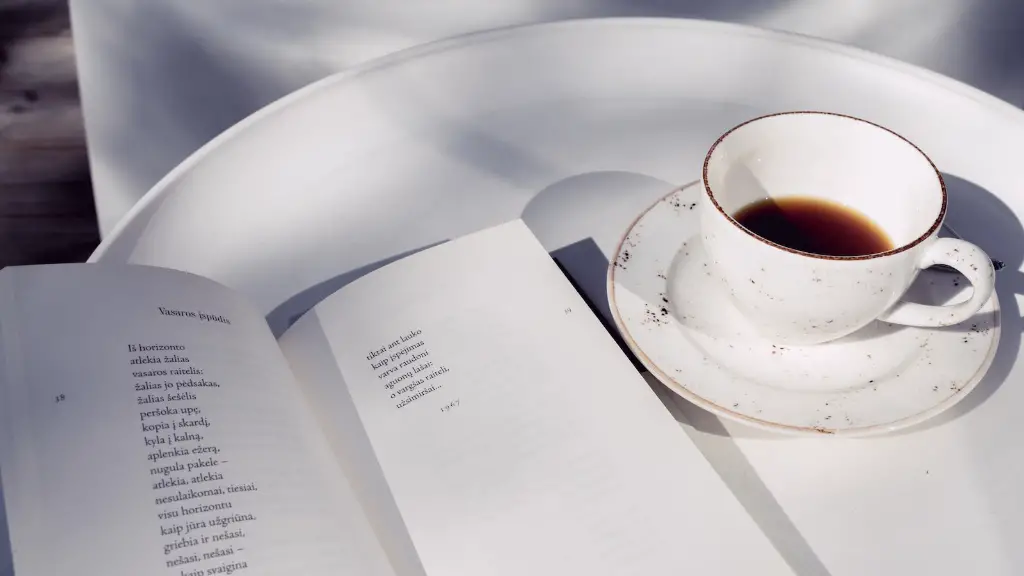Background Information
Narrative poetry is a type of poetry that tells a story, often drawing on other literary elements such as allegory, metaphor, and simile to tell tales that explore universal themes of life, love, and death. Poets often use narrative poetry to explore personal history and cultural identity, while telling stories as they go. Narrative poetry has been around since ancient times and can be found in cultures all over the world, serving as artistic expressions of the human experience.
Characteristics
At its core, narrative poetry is a story that is expressed in the form of a poem. The plot of a narrative poem follows a particular structure and includes characters, plot, and setting. While narrative poems can be written in any poetic form, the most common is the ballad. Ballads are short poems with refrains that tell stories of ordinary people and their experiences, such as love and war. Other common features of narrative poetry include the use of dialogue, repetition, and the use of devices such as alliteration and rhyme to emphasize particular points in the narrative.
Elements
One of the key elements of any type of poem, including narrative poetry, is the use of metaphor. This is the process of comparing two things that are not similar in order to create a vivid description. Metaphors can be used to emphasize important points or to create an emotional connection with the reader. Another important element of narrative poetry is the use of imagery. Imagery is the use of descriptive language to create a vivid mental image in the reader’s mind. This is an important tool for poets as it allows them to convey their message more effectively and create a deeper connection between their words and the feelings of the reader.
Symbolism
Symbolism is another important tool used by poets to convey meanings beyond what is written on the page. Symbols are used in narrative poetry to represent different ideas and emotions and to build tension in the poem. For example, a common symbol used in narrative poetry is the moon, which often symbolizes love and longing. Symbols can also be used to represent certain aspects of the human experience, such as death or life. By using symbols, poets can create deeper layers of meaning in their poems.
Figurative Language
Figurative language is another important element that can be used in narrative poetry. This is the use of language that does not have its literal meaning, but rather is used to create a vivid mental image or evoke a particular emotion. Examples of figurative language include similes, personification, and hyperbole. By using figurative language, poets can make their poems more interesting and powerful.
Point Of View
The point of view of a narrative poem is also important, as it determines how the poem will be interpreted by the reader. A poem can be presented from the point of view of the protagonist, the antagonist, or a third-person narrator. Each point of view will have an impact on how the poem is interpreted, as each perspective has its own set of biases and filters through which the poem is seen.
Techniques
Poets often use different techniques to ensure that their poems flow smoothly and evoke the desired emotion in the reader. One technique commonly used in narrative poetry is repetition, as this emphasises an important point or creates a sense of continuity. Another technique used is the use of rhyme, as this helps to create a certain rhythm in the poem which can aid with its flow.
Verse Structure
An important element of any poem, including narrative poems, is the verse structure. Different types of verse structures can help to create different effects. For example, a sonnet is a traditional form of poetry often used to express love and has a particular pattern of rhyme and meter. Other common types of verse structures include the ode and the elegy, which can be used to express much deeper emotions such as grief and sorrow.
Interpretation
The interpretation of a narrative poem is an important element as it can determine how the reader will experience the poem. Each reader will interpret a poem in a different way, as their own experiences and perspectives influence the meaning they derive from a poem. Understanding how readers may interpret a poem can therefore help poets to ensure that their message is expressed in the most effective way possible.
Themes
Themes can also be an important element of narrative poetry. A theme is a universal concept that can be interpreted in different ways and expressed in various different contexts. Common themes in narrative poetry include love, death, war, and time. By exploring a particular theme in a poem, poets can use narrative to explore the complexities of life and inspire readers to think deeply about the topics addressed.
Narrative Poetry in the Digital Age
Over the past few decades, the internet and digital technology have opened up many possibilities for narrative poetry. For example, poets can now use blogs and social media to share their poems with the world, creating a larger audience and allowing their work to reach a much wider range of people. This can be beneficial for poets as it allows them to become more established and gain recognition for their work. Additionally, digital media can also provide inspiration for poets looking for new ideas, as well as support networks and resources to help them hone their craft.
Popularity of Narrative Poetry
Despite its ancient origins, narrative poetry is still popular today, due to its ability to explore the stories that we can tell with words. This type of poetry can be used to express ideas and feelings, as well as explore difficult topics in a creative way. By using narrative poetry, poets can tell powerful stories that stay with readers for a long time. Additionally, narrative poetry can be a great way to inspire people to think deeply about the messages contained within the poems.
Influence Of Technology On Narrative Poetry
As the ways in which people communicate has changed over the years, so too has the ways in which poets use language to tell their stories. Technology has provided poets with many new ways to express themselves, including using multimedia such as video and audio recordings. Poets can now create audio versions of their poems and share them with a larger audience via digital platforms. Technology has also enabled poets to explore more complex topics and formats, such as interactive poetry that allows readers to navigate through different layers of meaning.
Conclusion
In conclusion, narrative poetry is a powerful and evocative genre of poetry that has been around since ancient times. It uses a variety of literary devices such as metaphor, symbolism, and figurative language to tell stories and explore universal themes. By utilizing these elements, poets can create powerful works of art that stay with readers for a long time. Additionally, the use of technology has opened up new possibilities for poets to explore and express their ideas.



